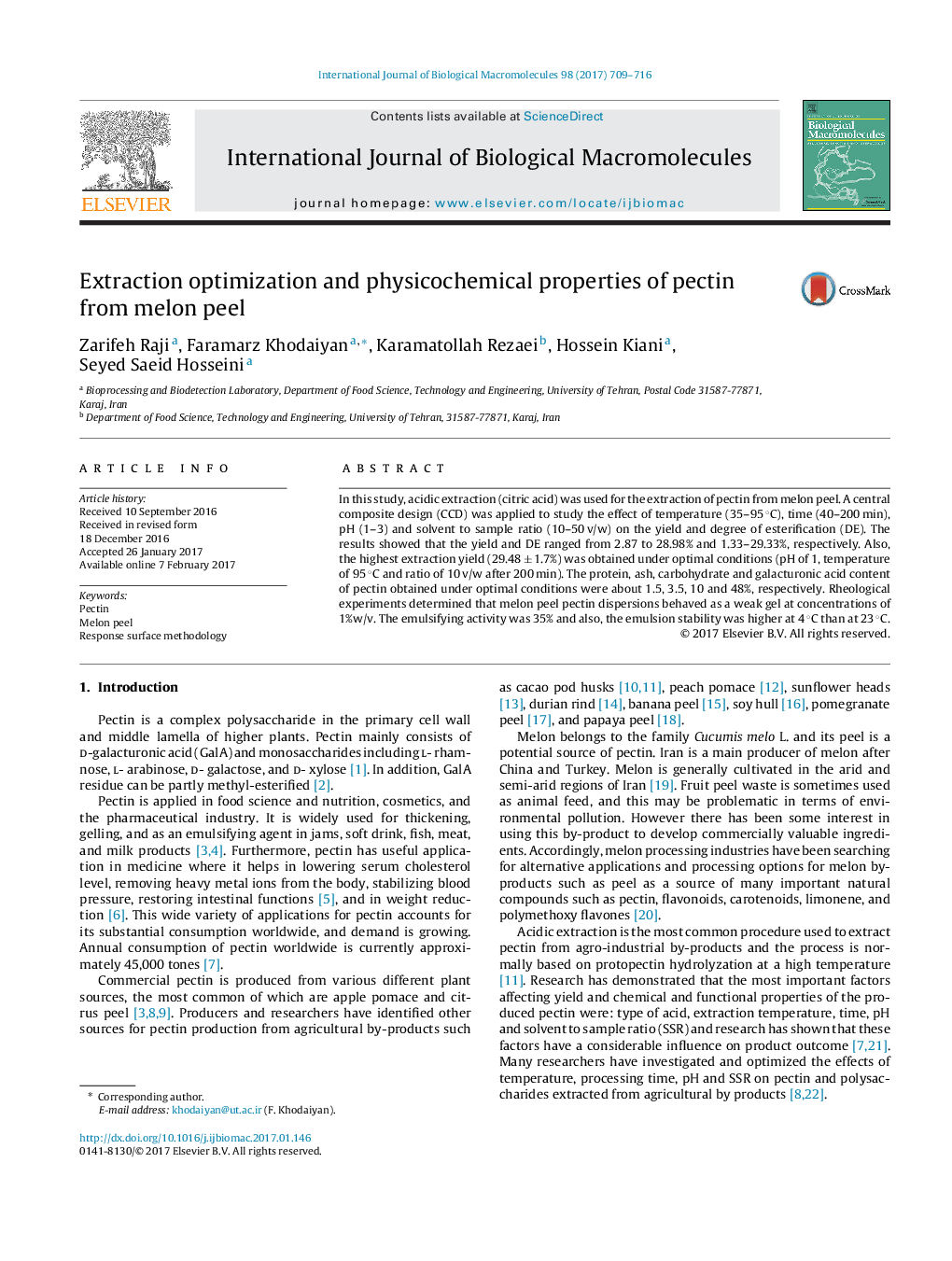| Article ID | Journal | Published Year | Pages | File Type |
|---|---|---|---|---|
| 5512324 | International Journal of Biological Macromolecules | 2017 | 8 Pages |
â¢Extraction of pectin from melon (Cucumis melo L.) peel was optimized.â¢Central composite design was used to model the yield and DE.â¢Citric acid was identified as the most effective acid for pectin extraction.â¢Optimum condition for pectin extraction at pH = 1 was 95 °C for 200 min with SSR 10.â¢Melon peel pectin is classified as low methoxyl pectin.
In this study, acidic extraction (citric acid) was used for the extraction of pectin from melon peel. A central composite design (CCD) was applied to study the effect of temperature (35-95 °C), time (40-200 min), pH (1-3) and solvent to sample ratio (10-50 v/w) on the yield and degree of esterification (DE). The results showed that the yield and DE ranged from 2.87 to 28.98% and 1.33-29.33%, respectively. Also, the highest extraction yield (29.48 ± 1.7%) was obtained under optimal conditions (pH of 1, temperature of 95 °C and ratio of 10 v/w after 200 min). The protein, ash, carbohydrate and galacturonic acid content of pectin obtained under optimal conditions were about 1.5, 3.5, 10 and 48%, respectively. Rheological experiments determined that melon peel pectin dispersions behaved as a weak gel at concentrations of 1%w/v. The emulsifying activity was 35% and also, the emulsion stability was higher at 4 °C than at 23 °C.
